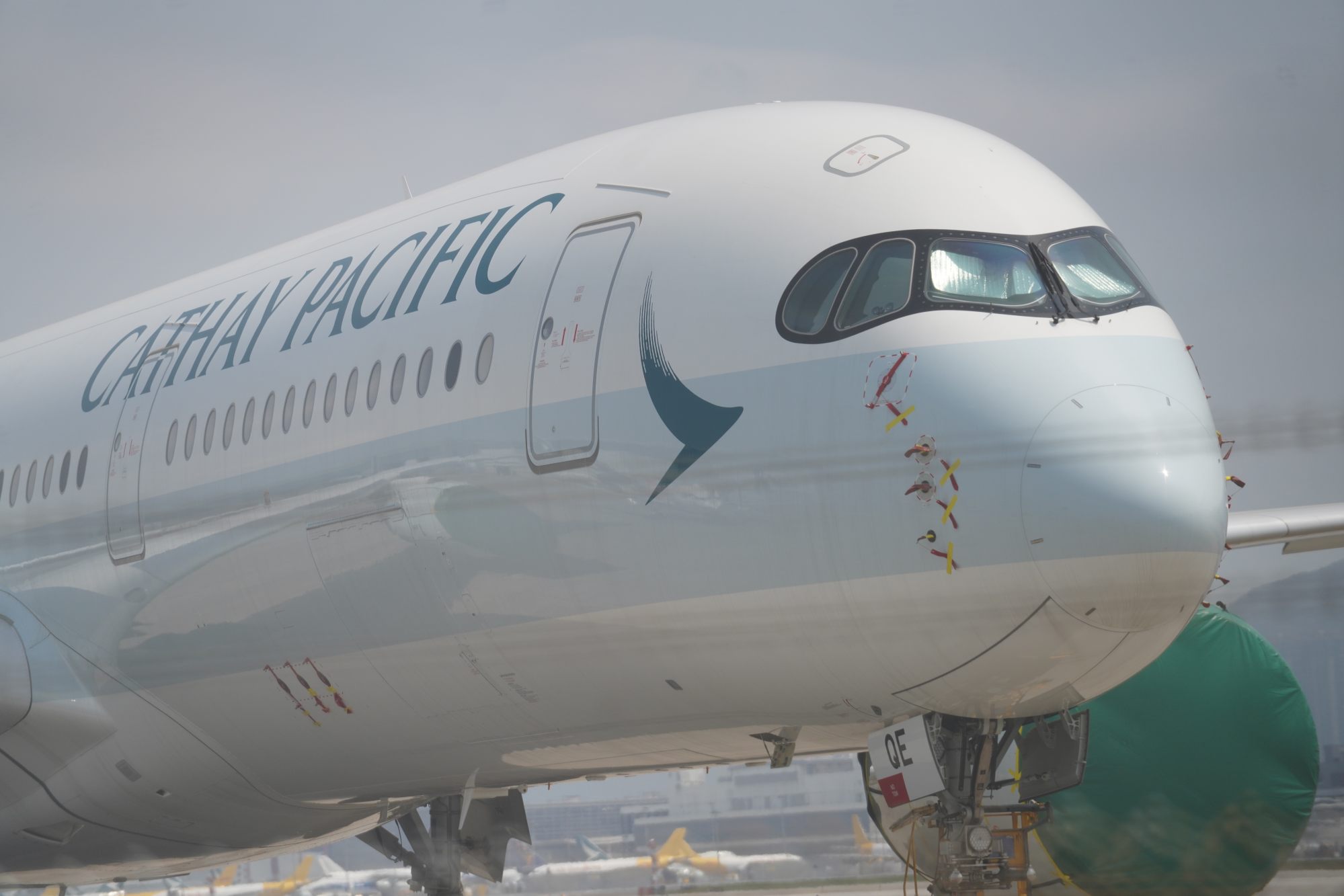
Cathay Pacific and cabin crew union should end dispute, avert damage to Hong Kong’s aviation hub status, government says
- Work-to-rule action set to go ahead from Thursday, with union releasing guidelines for its members
- Transport and Logistics Bureau calls on airline’s management to closely communicate with union and ensure stable services during Lunar New Year
The Hong Kong government has waded into a labour dispute between Cathay Pacific Airways and its cabin crew union, echoing calls by travel industry leaders who have urged the two sides to avert potential damage to the city’s status as an aviation hub.
In response to the Post’s queries, the Transport and Logistics Bureau on Wednesday broke its silence and called for the airline’s management to closely communicate with the union to properly handle the matter, especially in ensuring sufficient manpower to maintain stable flight services during the Lunar New Year peak.
The bureau encouraged the industry as a whole to work together during the nascent recovery.
“We take this opportunity to call on everyone in the aviation industry to work together, contribute to the industry’s recovery and cement Hong Kong’s status as an aviation hub,” the bureau’s spokesman said. “We hope everyone understands that manpower is a valuable resource in the aviation industry.”
The government acquired a 6.5 per cent stake in the airline after it made a HK$39 billion (US$4.98 billion) bailout of the company in 2020 to help it stay afloat when the coronavirus pandemic brought global travel to a standstill.
The Cathay Pacific Airways Flight Attendants Union on Wednesday issued detailed guidelines to cabin crew for implementing a work-to-rule arrangement on the eve of the impending industrial action, which is set to begin on Thursday.
More than 800 Cathay Pacific flights are scheduled to depart and arrive at Hong Kong International Airport between Thursday and January 22, the first day of the Lunar New Year holiday.
Tommy Tam Kwong-shun, the chairman of the Society of IATA Passenger Agents, a coalition of the largest travel agencies in Hong Kong, said the two sides should get back to the discussion table for a solution.

“The potential action is ill-timed, especially when Hong Kong begins to see the light at the end of the tunnel after a three-year-long downturn in tourism,” he said. “The two sides should make their best efforts to resolve the labour dispute for the sake of protecting the city’s aviation hub status.”
Cathay has assured travellers there is no need for concern and that flight services will continue as scheduled.
Tourism lawmaker Perry Yiu Pak-leung said he had learned that the Labour Department was, at one stage, involved in mediating between the two parties.
“It is natural that each side has their own considerations, but they should set their eyes on Hong Kong’s overall interest,” he said. “Don’t pour cold water on Hongkongers’ desire to fly again after they were unable to travel for three years.”
As part of its work-to-rule action, the union reminded cabin crew to do no more than required by company policies and standards, to not accept any request to work on rest days and fly only when mentally and physically fit.
By threatening the action, the union said it wanted to bargain for fairer roster arrangements, guaranteed minimum layover periods on overseas outports, and regular meetings with the airline, as well as more manpower on flights and contract reviews.
Cathay CEO Ronald Lam Siu-por on Tuesday night appealed to staff members for unity, saying they needed to work as one team to “survive and thrive in the competitive environment”.
He conceded that the airline’s previous practices were “simply not competitive” and the company had to make changes.
“We must continue to change ourselves and do things differently and better no matter how hard the change may be initially,” he said.
The Post has learned that management is determined to push through changes to raise efficiency and productivity. For example, management wanted to align productivity of cabin crew and pilots – in terms of hours worked and pay – to that of international airlines.
One source familiar with the situation said that Cathay’s cabin crew and pilots were about 30 per cent less productive than its competitors during the pandemic while staff pay packages were similar.
The source said that cabin crew worked about 65 flying hours a month before the pandemic compared with about 90 flying hours for other global airlines.
Hong Kong’s battered tourism industry became hopeful for recovery after quarantine-free travel with mainland China was restored for the first time in three years on January 8.
Tam said he was disappointed with Cathay’s sluggish service resumption. In December, the airline was operating at less than 40 per cent of its pre-Covid-19 levels, lagging behind rival Singapore Airlines’ 80 per cent in the same month.
He advised Cathay travellers to leave some leeway in their holidays in case of any disruptions. “Do not take red-eye flights, for example,” he said.


